- Current Issue Table of Contents
- Current Issue Featured Articles
- 50th Anniversary
- Subscribe Today
- Online Access
- Information for Authors
- Past Featured Articles
- Seminal Articles
- Stephen Mitchell Collection
- Search for Articles by Author
- Search for Articles by Volume
- Order Back Issues
- Sample Copy
- Letters to the Editor
- Contact Us
Graduates' Books and Publications

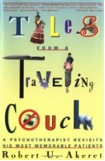








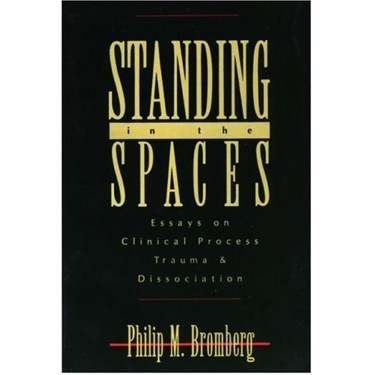
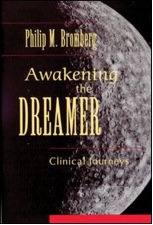
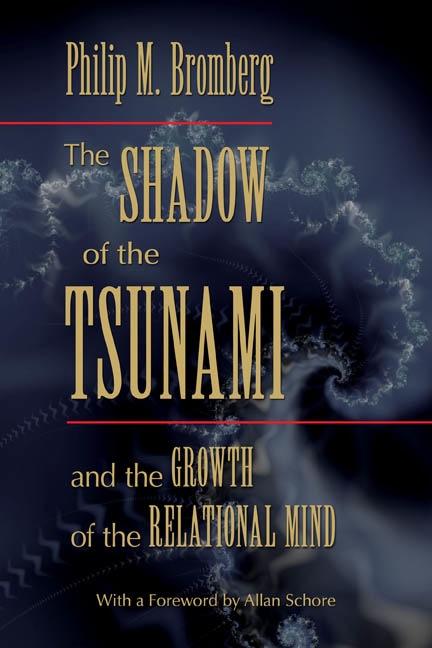
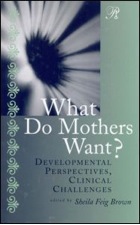


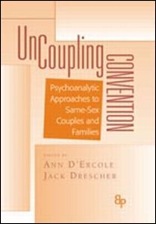
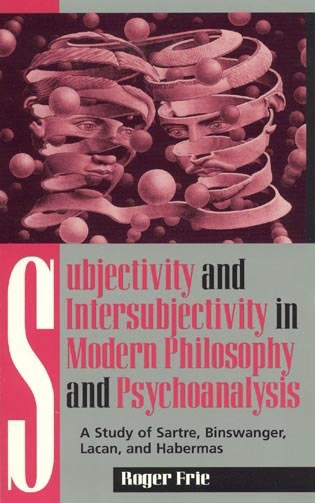




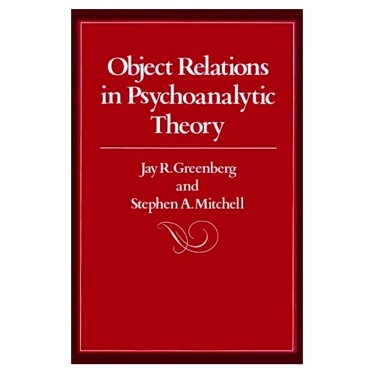
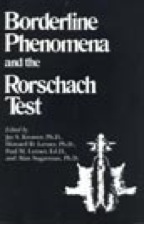
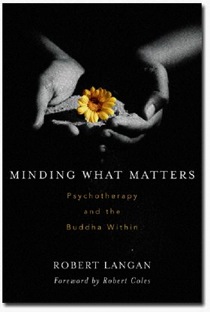
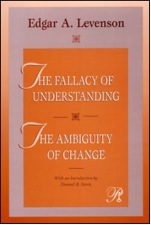

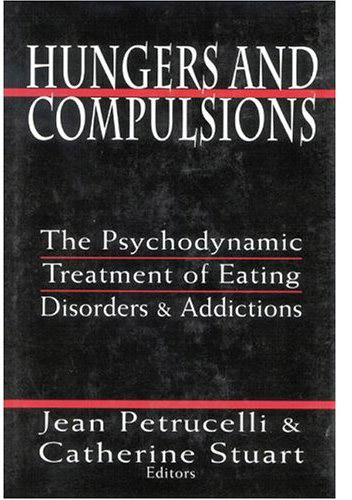
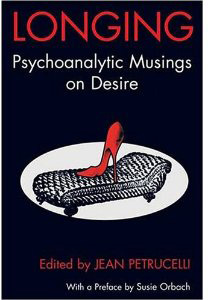

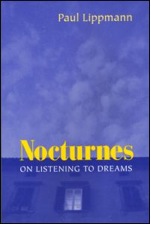
.jpg)


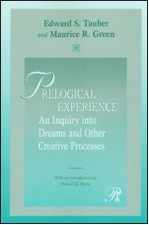

Akeret, R. (1972). Not by words alone. New York: Peter Wyden.
Akeret, R. (1974). Photoanalysis: How to interpret the hidden psychological meaning of personal and public photographs. New York: Fireside.
Akeret, R. (1991). Family tales, family wisdom: How to gather the stories of a lifetime and share them with your family. New York: Morrow.
Akeret, R. (1995). Tales from a travelling couch. New York: Norton and Company.
Akeret, R. (2000). Photolanguage. New York: W.W. Norton & Co.
Akhtar, S. & Kanwal, G. (2017). Breavement: Personal experiences and clinical reflections. London, U.K.: Karnac
Altman, N., Briggs, R., Frankel, J., Gensler, D., & Pantone, P. (2002). Relational child psychotherapy. New York: Other Press.
Arieti, S. (1972). The will to be human. New York: Quadrangle Books.
Arieti, S. (Ed.). (1974). The foundations of psychiatry. 2nd edition. New York: Basic Books.
Arieti, S. & Brody, B. (Eds.). (1974). Adult clinical psychiatry. New York: Basic Books.
Arieti, S. (1974). Interpretation of schizophrenia, 2nd edition. New York: Basic Books.
Arieti, S. (Ed.). (1974). American handbook of psychiatry. New York: Basic Books.
Arieti, S. & Chrzanowski, G. (Eds.). (1977). New dimensions in psychiatry: A world view. New York: Wiley Books.
Arieti, S. (1976). Creativity: The magic synthesis. New York: Basic Books
Arieti, S. (1978). On schizophrenia, phobias, depression, psychotherapy, and the farther shores of psychiatry. New York: Brunner/Mazel.
Arieti, S. & Bemporad, J. (1978). Severe and mild depression: The psychotherapeutic approach. New York: Basic Books.
Arieti, S. & Chrzanowski, G. (Eds.). (1977). New dimensions in psychiatry: A world view, volume 2. New York: Wiley Books.
Arieti, S. (1978). On schizophrenia, phobias, depression, psychotherapy, and the farther shores of psychiatry. New York: Brunner/Mazel.
Arieti, S. (1979). Understanding and helping the schizophrenic: A guide for family and friends. New York: Basic Books.
Arieti, S. and Arieti, R. (1977). Love can be found: A guide to the most desired and most elusive emotion. New York: Harcourt Brace Jovanovich.
Aronson, S. & Scheidlinger, S. (2002). Group treatment of adolescents in context: Outpatient, inpatient, and school. Madison, CT: International Universities Press.
Aviram, R. B. (2009). The relational origins of prejudice: A convergence of psychoanalytic and social cognitive perspectives. Northvale, NJ: Jason Aronson Press.
Barish, K. (2009). Emotions in child psychotherapy: An integrative framework. New York: Oxford University Press.
Bellinson, J. (2002). Children's use of board games in psychotherapy. Northvale, NJ: Jason Aronson.
Belkin, M. (2021). Toward an Intersectional Analysis of Race, Gender, and Sexuality. Contemporary Psychoanalysis. 57 (2), 206-228.
Belkin, M. & White, C. (Eds.). (2020). Intersectionality and Relational Psychoanalysis: New Perspectives on Race, Gender, and Sexuality. London: Routledge.
Blechner, M. J. (2018). Collateral damage in the battle to change sexual orientation. In: A. Slomowitz and A. Feit, eds., Conflicting Desires: Psychoanalytic and Rabbinic Discourses on LGBTQ Issues in the Orthodox Jewish Community, in press.
Blechner, M. J. (2018). Psychiatric shelter and the womb. In: Bouras, C., ed., A Shelter for Architecture. New York: GIANY, 2018, 61-63.
Blechner, M. J. (2017). The clitoris: Anatomical and psychological issues. Studies in Gender and Sexuality, 2017, 18:190-200.
Blechner, M. J. (2017). Disgust, delight, and in between. Studies in Gender and Sexuality, 2017, 18 (2):104-109.
Blechner, M. J. (2017). Psychoanalysis and dream analysis. In: Wenzel, A., ed., The SAGE Encyclopedia of Abnormal and Clinical Psychology, 2017.
Blechner, M. J. (2017). Dissociation among psychoanalysts about sexual boundary violations. In: Petrucelli, J. & Schoen, S., eds., (2017) Unknowable, Unspeakable, and Unsprung: Psychoanalytic Perspective on Truth, Scandal, Secrets, and Lies. New York: Routledge, pp. 171-180.
Blechner, M. J. (2017). Understanding homophobia. In: Giffney, N. & Watson, E. (2017) Clinical Encounters in Sexuality: Psychoanalytic Practice and Queer Theory. London: Punctum Books, pp. 369-374.
Blechner, M. J. (2016). Aspetti del lavoro con pazienti psicotici (Aspects of clinical work with psychotic patients). In: Lombardi, R., Rinaldi, L., & Thanopoulos, S., eds. (2016) Psicoanalisi delle Psicosi. (Psychoanalysis of the Psychoses). Milan: Rafaello Cortina, pp. 95-108.
Blechner, M. J. (2009). Sex changes: Transformations in society and psychoanalysis. New York: Routledge.
Blechner, M. J. (2001). The dream frontier. Hillsdale, NJ: Analytic Press.
Blechner, M. J., (Ed.). (1997). Hope and mortality: Psychodynamic approaches to AIDS and HIV. Hillsdale, NJ: The Analytic Press.
Blitz, L. & Pender Greene, M. (Eds.). (2006). Racism and racial identity: Reflections on urban practice in mental health and social services. New York: Haworth Press.
Blumberg, P. & Hirsch, I. (2008). Introduction: Symposium on the Psychoanalytic Study of Art,
Culture and Media. Contemporary Psychoanalysis, 44: 266-268.
Bohm, L., & Curtis, R. (Eds.). (2007). On deaths and endings: Psychoanalysts' reflections on finality, transformations, and new beginnings. New York: Routledge.
Brenner, G.H., Bush, D.H., & Moses, J. (Eds.). (2009). Creating spiritual and psychological resilience: Integrating care in disaster relief work. New York: Routledge.
Brisman, J., Siegel, M. & Weinshel, M. (2009). Surviving an eating disorder -third edition: Strategies for family and friends. New York: Collins Living.
Bromberg, P. M. (1998). Standing in the spaces: Essays on clinical process, trauma, and dissociation. Hillsdale, NJ: The Analytic Press.
Bromberg, P. M. (2006). Awakening the dreamer: Clinical journeys. Mahwah, NJ: The Analytic Press.
Bromberg, P.M. (2011). The shadow of the tsunami: and the growth of the relational mind. New York: Routledge.
Brown, S. F. (2005). What do mothers want? Developmental perspectives, clinical challenges. Hillsdale, N.J.: The Analytic Press.
Buechler, S. (2004). Clinical values: Emotions that guide psychoanalytic treatment. Hillsdale, NJ: The Analytic Press.
Buechler, S. (2008). Making a difference in patients' lives. New York: Routledge.
Burston, D. & Frie, R. (2006). Psychotherapy as a human science. Pittsburgh: Duquesne University Press.
Caligor, L., Bromberg, P. M., & Meltzer, J. D. (Eds.). (1984). Clinical perspectives on the supervision of psychoanalysis and psychotherapy. New York: Plenum Press.
Caligor, L. & May, R. (1968). Dreams and symbols, man’s unconscious language. New York: Basic Books.
Chanler, A. (2017). Mindfulness meets enmeshment: Disentangling without detaching with embodied self-empathy as a guide. Spirituality in Clinical Practice, 4: 145-151.
Chrzanowski, G. (1977). Interpersonal approach to psychoanalysis: Contemporary view of Harry Stack Sullivan. New York: Gardner Press.
Crastnopol, M. (Peggy) (2015). Micro-trauma: A Psychoanalytic Understanding of Cumulative Psychic Injury. New York: Routledge.
Curtis, R. (Ed.). (1989). Self-defeating behaviors. New York: Plenum Press.
Curtis, R. (Ed.). (1991). The relational self. New York: Guilford Press.
Curtis, R., & Stricker, G. (Eds.). (1991). How people change. New York: Plenum Press.
Curtis, R.C. (2008). Desire, self, mind, and the psychotherapies: unifying psychological science and psychoanalysis. Northvale, NJ: Jason Aronson.
Dellis, N.P. & Stone, H.K. (Eds.). The training of psychotherapists; a multidisciplinary approach. Baton Rouge, Louisiana State University Press.
D’Ercole, A. & Drescher, J. (Eds.). (2004), Uncoupling convention: Psychoanalytic approaches to same-sex couples and families. Hillsdale, NJ: The Analytic Press.
Drescher, J. (1998). Psychoanalytic therapy and the gay man. Hillsdale,
NJ: The Analytic Press.
Drescher, J., D’Ercole, A. & Schoenberg, E. (Eds.). (2003). Psychotherapy with gay men and lesbians: Contemporary dynamic approaches. New York: Harrington Park Press.
Drescher, J. & Clarke, P. (Eds.). (2007) British LGB psychologies: Theory, research and practice. New York: Taylor & Francis.
Drescher, J. & Glassgold, JM. (Eds.). (2007) Activism and LGBT psychology. New York: Haworth Press.
Drescher, J. & Mathy, R. (Eds.). (2008) Childhood gender nonconformity and the development of adult homosexuality. New York: Routledge.
Drescher, J. & Zucker, K.J. (Eds.). (2006). Ex-gay research: Analyzing the Spitzer study and its relation to science, religion, politics, and culture. New York: Harrington Park Press.
Drescher, J. & Merlino, J.P. (Eds.). (2007). American psychiatry and homosexuality: An oral history. New York: Harrington Park Press.
Drescher J, Cohen-Kettenis PT, Reed GM: Gender incongruence of childhood in the ICD-11: Controversies, proposal, and rationale. Lancet Psychiatry, 2016, 3:297-304.
Drescher J, Schwartz A, Casoy, F, McIntosh CA, Hurley, B, Ashely K, et al: The growing regulation of conversion therapy. Journal of Medical Regulation, 2016, 102(2):7-12. Winner of Federation of State Medical Boards’ Award for Excellence in Editorial Writing, April 26, 2018.
Reed GM, *Drescher J, Krueger RB, Atalla E, Cochran SD, First MB, Cohen-Kettenis PT, et al. Revising the ICD-10 Mental and Behavioural Disorders classification of sexuality and gender identity based on current scientific evidence, best clinical practices, and human rights considerations. World Psychiatry, 2016, 15:205–221.
Drescher J: Ghosts in Psychoanalysis’ Closet. In Harris A, Kalb M, Klebanoff S (Eds.) Ghosts in the Consulting Room: Echoes of Trauma in Psychoanalysis. Routledge: New York and London, 2016, pp. 124-125.
Drescher J: Smoke gets in your eyes: Discussion of “When Harry met Jimmie.” Psychoanalytic Perspectives, 2017, 14(1):31-39.
Drescher J: Trauma and psychoanalysis: Hierarchies of suffering. In: Petrucelli J, Schoen S (Eds.) The Unknowable, the Unspeakable, and the Unsprung: Psychoanalytic Perspectives on Truth, Scandal, Secrets and Lies. Routledge: New York and London. 2017, pp. 61-68.
Drescher J: Gender diagnoses. In Legato MJ (Ed), Principles of Gender-Specific Medicine: Gender in the Genomic Era, Third Edition. Academic Press (Elsevier), London, 2017, pp. 17-26.
Drescher J, Byne W: Gender identity, gender variance and gender dysphoria. In Sadock BJ, Sadock VA, Ruiz P (Eds), Kaplan and Sadock’s Comprehensive Textbook of Psychiatry, Tenth Edition. Wolters Kluwer, Philadelphia, PA, 2017, pp. 2023-2039.
Drescher J, Byne W: Homosexuality, gay and lesbian identities, and homosexual behavior. In Sadock BJ, Sadock VA, Ruiz P (Eds), Kaplan and Sadock’s Comprehensive Textbook of Psychiatry, Tenth Edition. Wolters Kluwer, Philadelphia, PA, 2017, pp. 1982-2013.
Drescher J: Von Bisexualität zu Intersexualität: Geschlechterkategorien Neu Denken [From Bisexuality to Intersexuality: Rethinking Gender Categories]. In Hutfless E, Zach B (Eds), Queering Psychoanalysis: Psychoanalyse und Queer Theory - Transdisziplinäre Verschränkungen. Zaglossus [Psychoanalysis and Queer Theory—Interdisciplinary Entanglements]. Vienna, Austria, 2017, pp. 43-96.
Drescher J: Becoming a psychoanalyst. In Hillman L, Rosenblatt T (Eds), The Analyst’s Voice: Narratives on Developing a Psychoanalytic Identity. Routledge: New York and London, pp. 77-93.
Ehrenberg , D. (1992). The intimate edge: Extending the reach of psychoanalytic interaction. New York: W.W. Norton & Co.
Elizur, J., & Minuchin, S. (1989). Institutionalizing madness: Families, therapy, and society. New York: Basic Books.
Epstein, L. & Feiner, A.H. (1979). Countertransference—The therapist's contribution to the therapeutic situation. New York: Jason Aronson.
Feiner, A. (2000). Interpersonal psychoanalytic perspectives on relevance, dismissal, and self-definition London: Jessica Kingsley.
Fiscalini, J., & Grey, A. L. (1993). Narcissism and the interpersonal self. New York: Columbia University Press.
Fiscalini, J. (2004). Coparticipant psychoanalysis: Toward a new theory of clinical inquiry. New York: Columbia University Press.
Frie, R. (1997). Subjectivity and intersubjectivity in modern philosophy and psychoanalysis. Lanham, MD: Rowman and Littlefield.
Frie, R. (Ed.). (2003). Understanding experience: Psychotherapy and postmodernism. New York and London: Routledge.
Frie, R.(2006). Psychotherapy as a human science. Pittsburgh, PA: Duquesne University Press.
Frie, R. (Ed.). (2008). Psychological agency: Theory, practice and culture. Cambridge, MA: MIT Press.
Frie, R. & Orange, D. (Eds.). (2009). Beyond postmodernism: New dimensions in clinical theory and practice. London: Routledge.
Fromm, E. (1941). Escape from freedom. Oxford, England: Farrar & Rinehart.
Fromm, E. (1942). The fear of freedom. London: K. Paul, Trench, Trubner & Co., Ltd.
Fromm, E. (1947). Man for himself, an inquiry into the psychology of ethics. New York: Rinehart.
Fromm, E. (1951). The forgotten language: An introduction to the understanding of dreams, fairy tales, and myths. New York, Rinehart.
Fromm, E. (1955). The sane society. New York: Rinehart.
Fromm, E. (1956). The art of loving. New York: Harper.
Fromm, E. (1959). Psychoanalysis and religion. Oxford, England: Yale University Press.
Fromm, E. (1964). The heart of man, its genius for good and evil. Religious perspectives, v. 12. New York: Harper & Row.
Fromm, E. (1967). Psychoanalysis and religion. New Haven : Yale University Press
Fromm, E. (1968). The revolution of hope, toward a humanized technology. New York: Harper & Row.
Fromm, E. (1970). El arte de amar; una investigación sobre la naturaleza del amor. Buenos Aires: Editorial Paidós
Fromm, E. (1970). The crisis of psychoanalysis. New York: Holt, Rinehart, Winston.
Fromm, E. (1973). The anatomy of human destructiveness. New York: Holt, Rinehart and Winston.
Fromm, E. (1976). To have or to be? New York: Harper & Row.
Fromm-Reichmann, F. (1950). Principles of intensive psychotherapy. Chicago: University of Chicago Press.
Fromm-Reichmann, F. (1959). Psychoanalysis and psychotherapy, selected papers. Chicago: University of Chicago Press.
Gartner, R. (2005). Beyond betrayal: Taking charge of your life after boyhood sexual abuse. New York: Wiley & Sons.
Gartner, R. (1999). Betrayed as boys: Psychodynamic treatment of sexually abused men, New York: Guilford Press.
Gartner, R. (Ed.) (1997). Memories of sexual betrayal: Truth, fantasy, repression, and dissociation. Northvale, New Jersey: Jason Aronson.
Glassgold, J.M. & Drescher, J. (Eds.). (2007). Activism and LGBT psychology. New York: Haworth Medical Press.
Glazer, D.F. & Drescher, J. (Eds.) (2001). Gay and lesbian parenting. New York: The Haworth Press.
Goldman, D. (Ed) (1997). In one's bones: The clinical genius of D.W. Winnicott. N.J: Jason Aronson Press.
Goldman, D. (1997). In search of the real: The origins and originality of D.W. Winnicott. Northvale, N.J.: Jason Aronson Press.
Greenberg, J. R., & Mitchell, S. A. (1983). Object relations in psychoanalytic theory. Cambridge, Mass: Harvard University Press.
Greenberg, J. R. (1991). Oedipus and beyond a clinical theory. Cambridge, Mass: Harvard University Press.
Group for the Advancement of Psychiatry. (2000). Homosexuality and the mental health professions: The impact of bias. Hillsdale, NJ: The Analytic Press.
Guss, J.R. & Drescher, J. (Eds.). (2000). Addictions in the gay and lesbian community. New York: The Haworth Press.
Halkitis, P.N, Wilton, L. & Drescher, J. (2005). Barebacking: Psychosocial & public health approaches. New York: The Haworth Press.
Hellman, R.E. & Drescher, J. (Eds.). (2004), Handbook of LGBT issues in community mental health. New York: The Haworth Press.
Hirsch, I. (2006). Psychoanalysis as a personal relationship. Psychoanalytic Perspectives, 3: 7-15.
Hirsch, I. (2006). The interpersonal roots of relational thinking. Contemporary Psychoanalysis, 42: 551-556.
Hirsch, I. (2007). Imperfect love, imperfect lives: Making love, making sex, making moral judgments.Studies in Gender and Psychoanalysis, 8:.355-371.
Hirsch, I. (2008). Coasting in the Countertransference: Conflicts of Self-Interest Between Analyst and Patient.. New York/London: Routledge.
Hirsch, I. (2008). Interviewed by Alan Sirote. Psychoanalytic Perspectives, 5: 115-120.
Hirsch, I. (Summer,2008). Interviewed by Karen Maroda. Psychologist-Psychoanalyst, 28: 60-65.
Hirsch, I. (2009). On idealism and soberness: Founding and maintaining a psychoanalytic institute. Contemporary Psychoanalysis: 45: .330-345.
Hirsch, I. (2009). The flawed person of the analyst: Commentary on paper by Lauren Levine. Psychoanalytic Dialogues, 19: 468-473.
Hirsch, I. (2009). Countertransference (Relationalism). The Edinburg International Encyclopedia of Psychoanalysis. R. Skelton, (Ed.). Edinburgh: Edinburgh University Press. p. 100.
Hirsch, I. (2009). Transference (Relationalism). The Edinburgh Encyclopedia of Psychoanalysis. R. Skelton, (Ed.) Edinburgh: Edinburgh University Press. p. 463-464.
Hirsch, I. (2010). Commentary on, “The Therapeutic Process”, by Sabert Basescu . In, Selected Papers on Human Nature and Psychoanalysis., George Goldstein and Helen Golden (Eds.) New York: Routledge. pp. 69-76.
Hirsch, I. (2010). Discussion: On the portrayal of psychoanalytic therapists in the media. Contemporary Psychoanalysis, 46: 250-257.
Horsch, I. (2010). Discussion: On some contributions of the Interpersonal tradition to contemporary psychoanalytic praxis. American Journal of Psychoanalysis, 70: 86-93.
Hirsch, I. & Blumberg, P. (2010). Introduction to special issue on intense involvement with sports. Contemporary Psychoanalysis, 46: 475-479.
Hirsch, I. (2010). On some advantages of mutual sexual fantasy in the analytic situation: Commentary on paper by Christopher Bonovitz. Psychoanalytic Dialogues, 20: 654-662.
Hirsch, I. (2011). It was a great month: None of my patients left. In Money Talks: In Therapy, Society and Life. B. Berger & S. Newman, (Eds) New York: Routledge. pp. 13-20.
Hirsch, I. (2011). Narcissism, mania and analysts’ envy. The American Journal of Psychoanalysis, 71: 363-369.
Hirsch, I. (2011). On some contributions of the Interpersonal psychoanalytic tradition to 21st century psychoanalysis. Contemporary Psychoanalysis, 47: 561-570.
Hirsch, I. (2014). Emerging from the oppositional and the negative. In, Steven Kuchuck (Ed.), Clinical Implications of the Analyst’s Life Experience: When the Personal Becomes Professional. New York/London: Routledge. pp. 49-64.
Hirsch, I. (2014). Going deep – going wide. Psychoanalytic Dialogues. 24: 317-331.
Hirsch, I. (2014). Narcissism, mania and analysts’ envy of patients. Psychoanalytic Inquiry. 34: 408-420.
Hirsch, I. (2015). The Interpersonal Tradition: The Origins of Psychoanalytic Subjectivity. New York/London: Routledge.
Hirsch, I. (2016). Reflections on Ferenczi: Analytic subjectivity and analytic hierarchy. Contemporary Psychoanalysis, 52: 383-390.
Hirsch, I. (2016). On relational hierarchy: Friends or parents? Discussion of Lisa Director and Robert Grossmark. Psychoanalytic Dialogues, 26:: 722-733.
Hirsch, I. (2016). Subjectivity and analysts’ personal freedom: Analytic theory and technique in light of each analyst’s unique individuality. Issues in Psychoanalytic Psychology. 38: 90-98.
Hirsch, I. (2017). Subjectivity and analysts’ personal freedom. In, J. Petrucelli & S. Schoen (Eds.), Unknowable, Unspeakable, and Unsprung: Psychoanalytic Perspectives on Truth, Scandal, Secrets, and Lies. New York/London: Routledge. pp. 124-133.
Hirsch, I. (2017). External crises and analytic symmetry. Psychoanalytic Dialogues, 27: 122-124.
Hirsch, I. (2018). From familiar and familial repetition to the anxiety of living differently. Contemporary Psychoanalysis. 42(2): In press.
Hirsch, I. (2018). Coutertransference and the person of the therapist. In: Ferenczi’s Influence on Contemporary Psychoanalytic Traditions: Evolution of Theory and Practice Over the Decades. A. Dimitrijevic, G, Cassullo & J. Frankel, Eds. London: Karnac. pp. In press.
Hirsch, I. (2008). Coasting in the countertransference; Conflicts of self interest between analyst and patient. Boca Raton, FL: CRC Press.
Kanwal, G. & Akhtar, S. (2109). Intimacy: Clinical, cultural, digital and developmental perspectives. London, New York: Routledge
Kanwal G.(1998). Some Comments on the Concept of the Ego-Ideal. The Jefferson Journal of Psychiatry, 1988, Volume 6, No. 2:4-11
Kanwal, G.(1997). Hope, Respect and Flexibility in the Psychotherapy of Schizophrenia.Contemporary Psychoanalysis Vol. 33, No. 1, January 1997.
Kanwal G.(2016). Indian Culture and the Experience of Psychoanalytic Treatment. The Psychoanalytic Review: Vol. 102, Special Issue: Psychoanalysis and India, pp. 843-872. doi: 10.1521/prev.2015.102.6.843
Kanwal, G. (2016). Perspectives on decision-making: implications for understanding psychopathology in psychiatric and psychoanalytic practice. Neuropsychoanalysis,Vol. 18 Issue 1, pp doi:10.1080/15294145.2016.1149778
Kanwal, G (2017). ‘Benevolent Transformation’ and the Centrality of Idealization Dynamics in Indian Culture. Psychoanalytic Discourse. Issue 3, Feb. 2017. http://www.psychoanalyticdiscourse.com/index.php/psad/article/view/41
Kanwal, G (2018). Loss, self sates and the immigrant analyst: Exploring the ‘analytic fourth’. Psychoanalysis, Culture and Society. https://doi.org/10.1057/s41282-018-0088-x
Kanwal, G: The Interview of the Depressed Patient. Book Chapter in “Approach to the Psychiatric Patient: Case based Essays” Ed Barnhill, J, American Psychiatric Publishing, Inc. 2009 (1st Ed.) and 2019 (2nd Ed.).
Karasic, D & Drescher, J. (Eds.). (2005). Sexual and gender diagnoses of the Diagnostic and Statistical Manual (DSM): A reevaluation. New York: Haworth Press.
Kwawer, J.S., Lerner, H.D., Lerner, P.M., & Sugerman, A. (Eds.). (1980). Borderline phenomena and the Rorschach test. Madison, CT: International Universities Press.
Landis, B., & Tauber, E. S. (1971). In the name of life; essays in honor of Erich Fromm. New York: Holt, Rinehart and Winston.
Langan, R.P. (2006). Minding what matters: Psychotherapy and the Buddha within. Boston: Wisdom Publications.
Levenson, Edgar A. (1972). The fallacy of understanding. New York: Basic Books.
Levenson, Edgar A. (1983). The ambiguity of change. New York: Basic Books.
Levenson, E.(1991). The purloined self: Interpersonal perspectives in psychoanalysis. New York: W.A.White Press.
Levenson, E. (2005). The fallacy of understanding and the ambiguity of change. Introduction by Donnel B. Stern. Hillsdale NJ: Analytic Press.
Leli, U. & Drescher, J. (Eds.) (2004). Transgender Subjectivities: A Clinician’s Guide. New York: The Haworth Press.
Lionells, M., Fiscalini, J., Mann, C. H. & Stern, D. B. (Eds.) (1995). The handbook of interpersonal psychoanalysis. Hillsdale, NJ: The Analytic Press.
Lingiardi, V. & Drescher, J. (Eds.). (2003). The mental health profession and homosexuality: International perspectives. New York: Haworth Press.
Lippmann, P.( 2000). Nocturnes: On listening to dreams. Hillsdale, NJ: The Analytic Press.
Greene, MP. (2006). Racism and racial identity: Reflections on urban practice in mental health and social services. New York: Routledge.
Mathy, R. & Drescher, J. (Eds.). (2008). Childhood gender nonconformity and the development of adult homosexuality. New York: Haworth Medical Press.
May, R. (1950). The meaning of anxiety. Oxford, England: Ronald Press.
May, R. (1953). Man's search for himself. Oxford, England: W. W. Norton & Co.
May, R. (1969). Love and will. Oxford, England: W.W. Norton & Co.
May, R. (1969). Existential psychology. New York: Crown Publishing Group/Random House.
May, R. (1972). Power and innocence: A search for the sources of violence. Oxford, England: W.W. Norton & Co.
May, R. (1975). The courage to create. Oxford, England: W.W. Norton & Co..
May, R. (1980). Psychology and the human dilemma. New York: W.W. Norton & Co.
May, R. (1981). Freedom and destiny. New York: W.W. Norton & Co.
Minuchin, P., Colapinto, J., & Minuchin, S. (2007). Working with families of the poor. (2nd ed.). New York, NY, US: Guilford Press.
Minuchin, S., Rosman, B., & Baker, L. (1978). Psychosomatic families: Anorexia nervosa in context. Oxford, England: Harvard University Press.
Minuchin, S., & Nichols, M. (1994). Family healing: Strategies for hope and understanding. New York: Simon & Schuster.
Minuchin, S., Lee, W., & Simon, G. (1996). Mastering family therapy: Journeys of growth and transformation. Oxford, England: John Wiley & Sons.
Minuchin, S., Lee, W., & Simon, G. (2006). Mastering family therapy: Journeys of growth and transformation (2nd ed.). Hoboken, NJ, US: John Wiley & Sons Inc.
Mitchell, Stephen A. (1988). Relational concepts in psychoanalysis. Cambridge, MA: Harvard University Press.
Mitchell, Stephen A. (1993). Hope and dread in psychoanalysis. New York: Basic Books.
Mitchell, Stephen A. (1997). Influence and autonomy in psychoanalysis. Hillsdale, NJ: The Analytic Press.
Mitchell, S. A., & Black, M. J. (1995). Freud and beyond: A history of modern psychoanalytic thought. New York: Basic Books.
Mitchell, Stephen A. (2000). Relationality: From attachment to intersubjectivity. Hillsdale, NJ: The Analytic Press.
Mitchell, S. A. (2002). Can love last? the fate of romance over time. New York: W.W. Norton & Co.
Morowitz, H. & Singer, J.L. (Eds.). (1995). Mind, brain and complex adaptive systems. New York & Boston: Addison-Wesley.
Newirth, J. (2004). Between emotion and cognition. New York: The Other Press.
Pearce, J. & Newton, S. (1963). The conditions of human growth. New York: The Citadel Press.
Peel, E., Clarke, V. & Drescher, J. (Eds.). (2007). British LGB psychologies: Theory, research and practice. New York: Haworth Medical Press.
Petrucelli, J. (Ed.). (2010). Knowing, not-knowing and sort-of-knowing: Psychoanalysis and the experience of uncertainty. London: Karnac Books
Petrucelli, J. (Ed.). (2006). Longing: Psychoanalytic musings on desire. London: Karnac Books.
Petrucelli, J. & Stuart, C. (Eds.). (2001). Hungers and compulsions: The psychodynamic treatment of eating disorders & addictions. Northvale, NJ: Jason Aronson Inc.
Perlman, G. & Drescher, J. (2005). A gay man’s guide to prostate cancer. New York: The Haworth Press.
Pope, K. S. & Singer, J. L. (Eds.). (1978). The stream of consciousness: Scientific investigations into the flow of human experience. New York: Plenum Press.
Richardson, W. J. (1982). Lacan and language. A reader's guide to the Écrits. New York: International Universities Press. (With John P. Muller)
Richardson, W. J. (1988). The purloined Poe: Lacan, Derrida, and psychoanalytic reading. Baltimore: Johns Hopkins. (With John P. Muller).
Richardson, W. J. (2003). Heidegger: Through phenomenology to thought. Preface by Martin Heidegger. Fortieth Anniversary Edition, with New Writer's Preface and Epilogue. New York: Fordham University Press.
Rosen, A. & Rosen, J. (Eds.). (2005) Frozen dreams: Psychodynamic dimensions of infertility and assisted reproduction. Hillsdale, NJ: The Analytic Press.
Rothe, K (2009), Das (Nicht-)Sprechen über die Judenvernichtung. Psychische Weiterwirkungen des Holocaust in mehreren Generationen nicht-jüdischer Deutscher. [(Non)Speaking about the Extermination of the Jews. Psychical Aftermaths of the Holocaust in Several Generations of non-Jewish Germans]. Gießen: Psychosozial. http://www.psychosozial-verlag.de/catalog/product_info.php/products_id/896?catp=&p_id=896
Schachtel, E.G. (1959). Metamorphosis: On the conflict of human development and the psychology of creativity. New York: Basic Books. Reissued 2001, Hillsdale, NJ: The Analytic Press.
Schachtel, E.G. (1966). Experiential foundations of Rorschach’s test. New York: Basic Books. Reissued 2001, Hillsdale, NJ: The Analytic Press.
Schaffner, B. (1948). Father land: A study of authoritarianism in the German family. New York: Columbia University Press.
Schneider, K.J. & May, R. (1995). The psychology of existence: An integrative, clinical perspective. New York: McGraw-Hill Book Company, 1995.
Segal, B., Huba, G. J., & Singer, J. L. (1980). Drugs, daydreaming and personality: A study of college youth. Hillsdale, NJ: Erlbaum Associates.
Shidlo, A., Schroeder, M. & Drescher, J. (Eds.). (2001). Sexual conversion therapy: Ethical, clinical and research perspectives. New York: The Haworth Press.
Siegel, M., Brisman J. & Weinshel, M. (1997). Surviving an eating disorder: Strategies for family and friends. New York: Harper Collins.
Silvano, A. & Chrzanowski, G. (Eds.). (1975). New dimensions in psychiatry: A world view. Oxford, England: John Wiley & Sons.
Singer, E. (1970). Key concepts in psychotherapy. New York: Basic Books.
Singer, D. G. & Singer, J. L. (1977). Partners in play: A step by step guide to imagination in preschool children. New York: Harper & Row. Revised new edition: Make-believe. Chicago: Scott Foresman, 1985. Dutch translation: Spelen met fantasie by Joop Hellendorn, The Netherlands: Van Loghum Slaterus, 1988.
Singer, D. G., Singer, J. L., & Zuckerman, D. (1981). Teaching television: How to use television to your child's advantage. New York: Dial Press.
Singer, D. G., & Singer, J. L. (1981). Getting the most out of television: Teachers' manual and children's workbook. Glenview, IL: Good Year Books, Scott Foresman and Company.
Singer, D. G., & Singer, J. L. (1985). Make believe: Games and activities to foster imagination and creativity in young children. Chicago, IL: Scott Foresman and Company. Dutch Translation, Spelen met fantasie by Joop Hellendorn, The Netherlands: Van Loghum Slaterus, 1988.
Singer, D.G., & Singer, J.L. (1995). Nel regno del possible: Gioco infantile, creativita e sviluppo dell'immaginazione. (G. Noferi, Trans.) Firenze, Italy: Giunti Gruppo Editoriale.
Singer, D.G., & Singer, J.L. (2001). Make believe: Games and activities for imaginative play. A book for parents, teachers and the young children in their lives. Washington, D.C.: Magination Press, American Psychological Association Books.
Singer, D.G., & Singer, J.L. (Eds.) (2001). Handbook of children and the media. Thousand Oaks, CA: Sage Publishing Company.
Singer, D.G. & Singer, J.L. (2005). Imagination and play in the electronic age. Cambridge, MA: Harvard University Press.
Singer, J.L. (1966). Daydreaming. New York: Random House.
Singer, J. L. (Ed.) (1971). The control of aggression and violence. New York: Academic Press. (Translated into German, Portuguese.)
Singer, J. L. (1973). The child's world of make-believe: Experimental studies of imaginative play. New York: Academic Press (with chapters by J. Freyberg, M. Pulaski, E. Biblow, S. Gottlieb).
Singer, J. L. (1974). Imagery and daydream methods in psychotherapy and behavior modification. New York: Academic Press. (Translated into German.)
Singer, J. L. (1975). The inner world of daydreaming. New York: Harper & Row, (Colophon pbk). (Translated into German, Dutch, Japanese, Polish, Portuguese.) Published by Oxford University Press paperback, 1979, Daydreaming and fantasy. (Translated into Dutch, Polish.)
Singer, J. L. & Pope, K. S. (Eds.) (1978). The power of human imagination: New approaches in psychotherapy. New York: Plenum Press.
Singer, J. L. & Switzer, E. (1980). Mind play: The creative uses of daydreaming. Englewood Cliffs, NJ: Prentice-Hall (Spectrum).
Singer, J. L. & Singer, D. G. (1981). Television, imagination and aggression: A study of preschoolers.Hillsdale, NJ: Erlbaum Associates.
Singer, J. L. (1984). The human personality: An introductory text. San Diego, CA: Harcourt Brace Jovanovich.
Singer, J. L. (1984). Instructor's manual for the human personality: An introductory text. San Diego, CA: Harcourt Brace Jovanovich.
Singer, J. L. (Ed.) (1990). Repression and dissociation: Implications for personality psychopathology and health. Chicago: University of Chicago Press.
Singer, J. L. (1990). The house of make-believe: Children's play and the developing imagination.Cambridge, MA: Harvard University Press.
Singer, J. L. (1990). The parent's guide: Use TV to your child's advantage. Washington, D. C.: Acropolis.
Singer, J. L. & Singer, D. G. (1992). Creating critical viewers: A partnership between schools and television professionals. Denver, CO: Pacific Mountain Network and the National Academy of Television Arts & Sciences.
Singer, J. L. & Singer, D. G. and Staff (1993). A role for television in the enhancement of children’s readiness to learn: In preparation for a report to the Congress of the United States, Washington, D.C., The Corporation for Public Broadcasting.
Singer, J.L. (2006). Imagery in psychotherapy. Washington, DC: American Psychological Association Books.
Sirkin, M. (2004). The secret life of corporations: Understanding the true nature of business. New York: New Chrysalis Press.
Spiegel, S. (1989). An interpersonal approach to child therapy. New York: Columbia University Press.
Stephens, M.A. (2014). Skin acts: Race, psychoanalysis and the black male performer. Chapel Hill: Duke University Press.
Stern, D. B., Mann, C. H., Kantor, S. & Schlesinger, G. (Eds.). (1995). Pioneers of interpersonal psychoanalysis. Hillsdale, NJ: The Analytic Press.
Stern, D.B. (1997). Unformulated experience: From dissociation to imagination in psychoanalysis. Hillsdale, NJ: The Analytic Press.
Stern, D.B. (2009). Partners in thought: Working with unformulated experience, dissociation, and enactment. New York: Routledge.
Stern, D.B. & Hirsch, I. (2017). The Interpersonal Perspective in Psychoanalysis, 1960’s-1990’s: Rethinking Transference and Countertransference. New York/London: Routledge.
Stern, D. B. & Hirsch, I. (2018). Further Developments in Interpersonal Psychoanalysis,1980s-2010,s: Evolving Interest in the Analyst’s Subjectivity. New York/London: Routledge
Sternberg, R.J., Grigorenko, E.L., & Singer, J.L. (Eds.). (2004). Creativity: From potential to realization. Washington, D.C.: American Psychological Association.
Stocker, M. & Hegeman, E. (1996). Valuing emotions. Cambridge: Cambridge University Press.
Sullivan, H. S. (1940). Conceptions of modern psychiatry. New York: W.W. Norton & Co.
Sullivan, H. S. (1953). The Interpersonal theory of psychiatry. New York: W.W. Norton & Co.
Sullivan, H. S. (1954). The psychiatric interview. New York: W.W. Norton & Co.
Sullivan, H. S. (1956). Clinical studies in psychiatry. New York: W.W. Norton & Co.
Sullivan, H. S. (1962). Schizophrenia as a human process. New York: W.W. Norton & Co.
Sullivan, H. S. (1964). The fusion of psychiatry and social science. New York: W.W. Norton & Co.
Sullivan, H. S. (1972). Personal psychopathology: Early formulations. (Written 1929-1933). New York: W.W. Norton & Co.
Suzuki, D.T., Fromm, E. & De Martino. R. (1960). Zen Buddhism and psychoanalysis. New York: Harper.
Tauber, E. S., & Green, M. R. (1959). Prelogical experience; an inquiry into dreams & other creative processes. New York: Basic Books.
Tauber, E. S., & Green, M. R. (2006, Reissued). Prelogical experience; an inquiry into dreams & other creative processes. Introduction by Donnel Stern. Hillsdale, NJ: The Analytic Press.
Taylor, J., Singer, J. L., Goldstein, H., Tsaltas, M., & Kasowski, E. (1976). A group home for adolescent girls: Practice and research. New York: Child Welfare League of America.
Thompson, C. M. (1950). Psychoanalysis: Evolution and development. With an introduction by Patrick Mullahy. New York: Hermitage House.
Thompson, C.M., Mazer, M. & Witenberg, E.A. (Eds.). (1955). An outline of psychoanalysis. New York: The Modern Library.
Thompson, C., & Van Teslaar, J. S. (1955). An outline of psychoanalysis. New York: Modern Library.
Thompson, C., & Green, M. R. (1964). Interpersonal psychoanalysis: The selected papers of Clara M. Thompson. New York: Basic Books.
Wainberg, M.L., Kolodny, A.J. & Drescher, J. (Eds.). (2006). Crystal meth and men who have sex with men: Community and public health responses. New York: Harrington Park Press.
Willock. B., Bohm, L.C. & Curtis, R. C. (2007). On deaths and endings: Psychoanalysts' reflections on finality, transformations and new beginnings. New York: Routledge.
Willock, B., Curtis, R.C., & Bohm, L.C. (Eds.). (2009). Taboo or not taboo? Forbidden thoughts, forbidden acts in psychoanalysis and psychotherapy. London: Karnac Books.
Witenberg, Earl G., Ed. (1973). Interpersonal explorations in psychoanalysis: New directions in theory and practice. New York: Basic Books.
Witenberg, E. (1978). Interpersonal psychoanalysis: New directions. Oxford, England: Gardner Press.
Wolstein, B. (1954). Transference: its meaning and function in psychoanalytic therapy. New York: Grune & Stratton.
Wolstein, B. (1959). Countertransference. New York: Grune & Stratton.
Wolstein, B. (1962). Irrational despair: An examination of existential analysis. New York: Free Press of Glencoe.
Wolstein, B. (1964). Freedom to experience: A study of psychological change from a psychoanalytic point of view. New York: Grune & Stratton.
Wolstein, B. (1964). Transference: Its structure and function in psychoanalytic therapy. New York: Grune & Stratton.
Wolstein, B. (1967). Theory of psychoanalytic therapy. New York: Grune & Stratton.
Wolstein, B. (Ed.). (1988). Essential papers on countertransference. New York: New York University Press.

